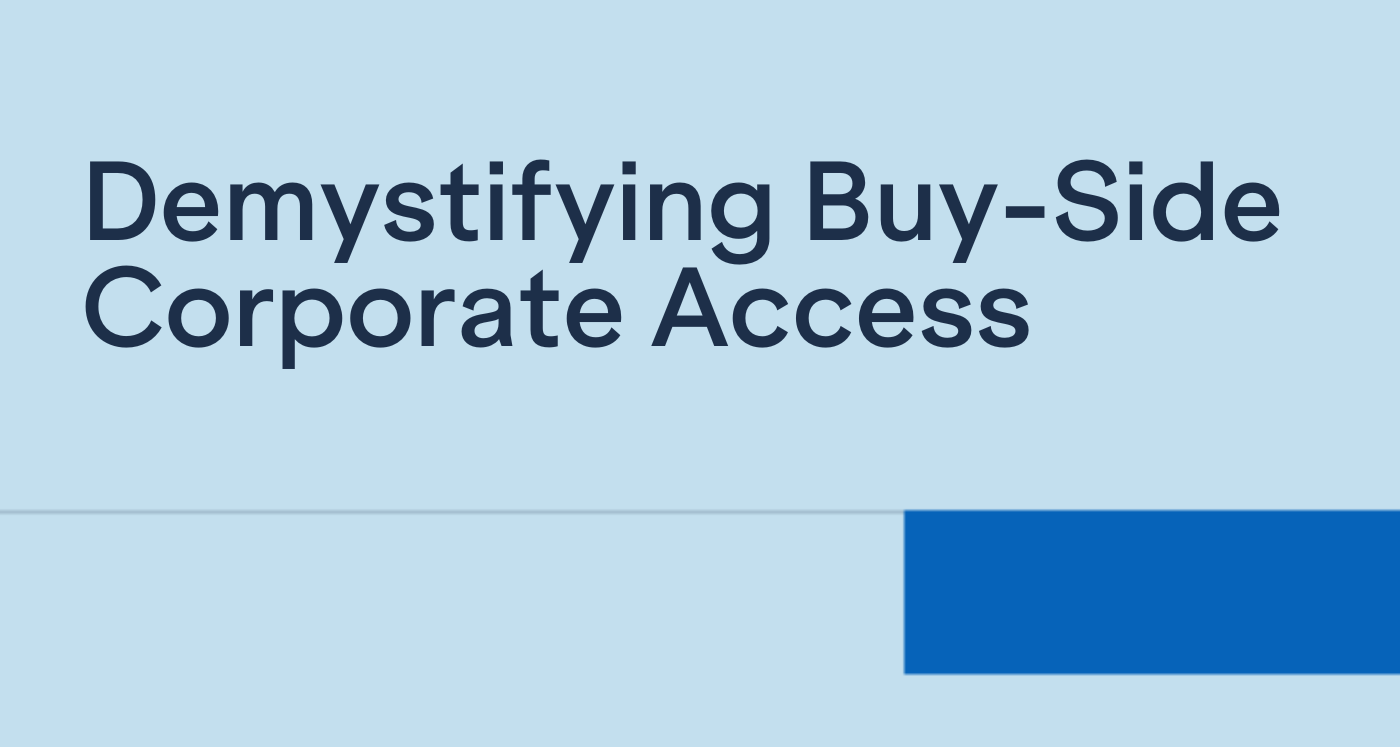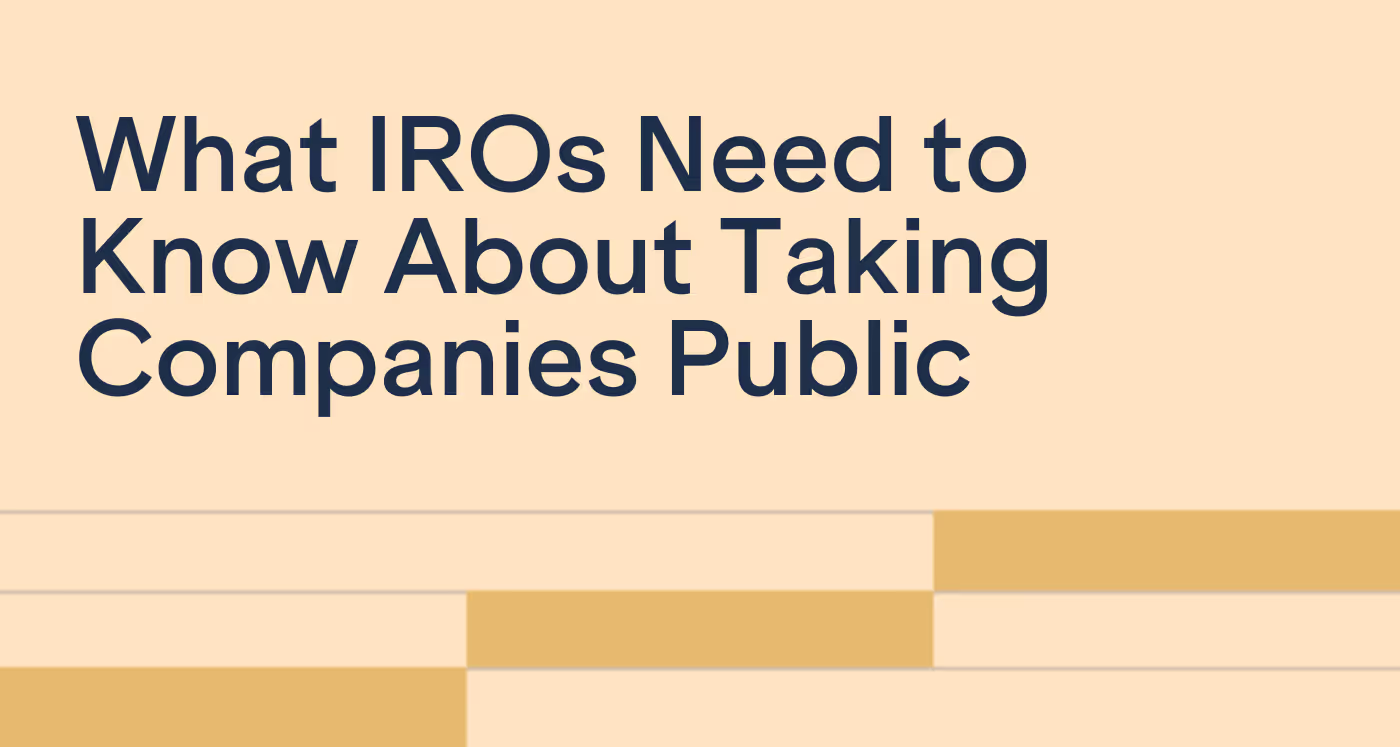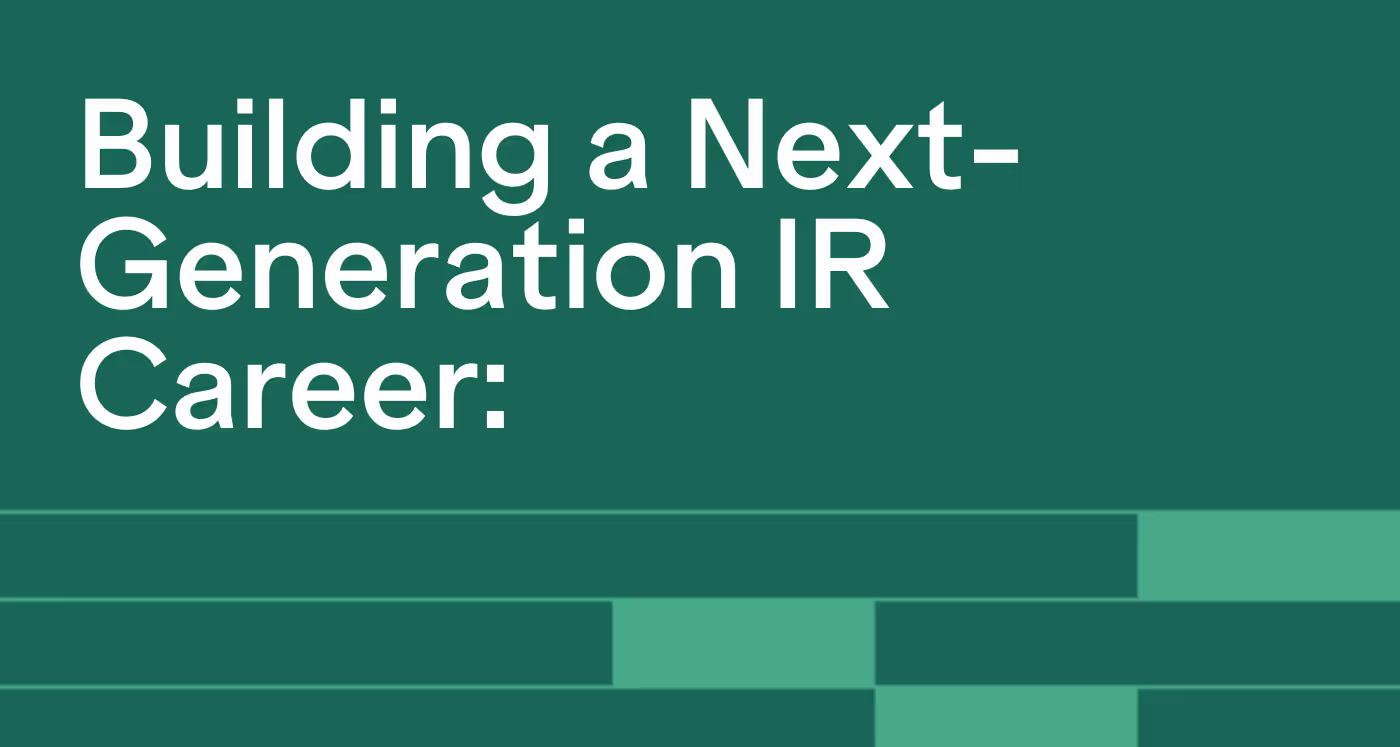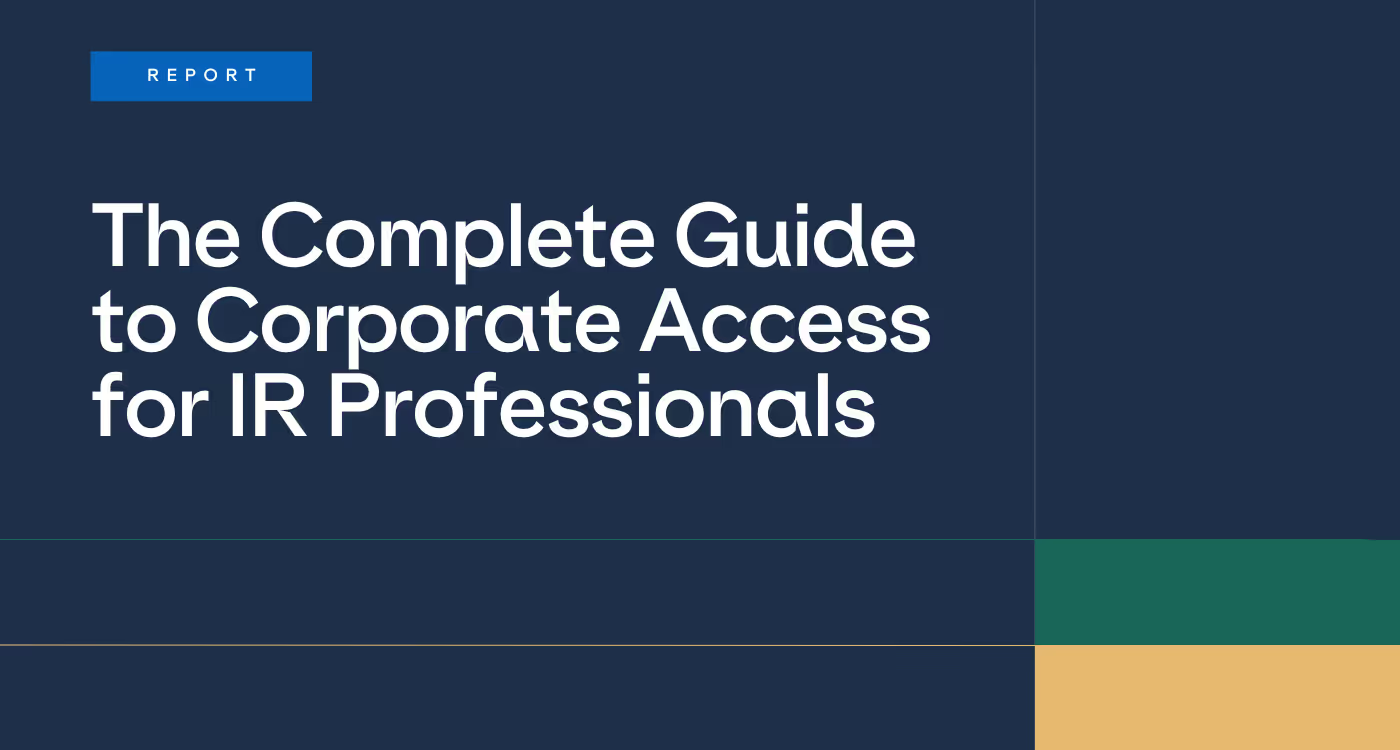
Demystifying Buy-Side Corporate Access: A Guide for IR Teams
Elizabeth Librizzi breaks down the secrets of buy-side corporate access to help investor relations professionals utilize buy-side firms.

Taking a company public represents one of the most significant career-defining moments for any investor relations officer (IRO). The process demands strategic thinking, meticulous planning, and a deep understanding of how public markets differ from private funding environments. Catherine Buan, an award-winning IR executive with over 20 years in the tech industry and current IR leader at Asana, has navigated multiple IPOs throughout her career, including high-profile public offerings for Lyft, DocuSign, and Ariba.
Through her extensive experience managing IPOs for some of the biggest tech companies in the market, Catherine offers invaluable insights for IR practitioners who find themselves—or want to find themselves—leading a company through the critical transition from private to public status.
Learn more about Going Public VS Stating Private
Catherine approaches the IPO process through a unique lens that fundamentally reframes how companies should think about going public.
"Whether you're public or about to go public, the role of the IRO is a product management/ product marketing role, and your product is the equity product.”
This perspective shift proves crucial for companies making the transition. Regardless of the product or service they sell, once they go public, the IRO markets the company as an equity product competing against every other equity in the market.
The foundation of this approach requires understanding several key elements: your company's market dynamics, growth drivers, leadership team, and target investor profile. Catherine emphasizes that this process mirrors traditional product marketing—you need to identify the product-market fit for your equity product before anything else.
The narrative component becomes equally important. Catherine often debates with CFOs who argue that storytelling doesn't matter because investors ultimately buy based on long-term earnings potential.
"They don't buy us because of how we performed this quarter, but what it implies and what we say about the narrative for the future. You're selling sustainable long-term earnings growth, and that's where the narrative comes in."
For companies preparing internally, this conversation often marks the first time leadership truly grasps that going public introduces an entirely new product into the market—an equity product for investors requiring fundamental growth drivers that investors can model for free cash flow analysis.
.avif)
Successfully executing an IPO requires building strong partnerships across multiple departments. Catherine describes the process using her product marketing framework, identifying two primary components: content production (narrative and supporting metrics) and go-to-market strategy (targeting investors, analysts, and media).
Catherine notes the importance of FP&A, highlighting their role in providing metrics and forecasts. Corporate marketing becomes another critical partnership for narrative development. Legal partnerships prove imperative for staying compliant and avoiding lawsuits, while the collaboration extends across numerous other departments. At Asana, Catherine partners with eight departments and 65-70 people on an ongoing basis, including events production, data science, R&D, and workplace teams—since every investor visit becomes a mini event requiring coordination.
Beyond internal partnerships, Catherine emphasizes the importance of specific external relationships. For example, she maintains a close working relationship with market makers, describing Pete Giachi from Citadel as a best friend with whom she regularly gauges market conditions and their impact on the SaaS or tech space.
On the vendor side, Catherine stresses that every IRO needs a customer relationship management (CRM) platform for tracking investors.
The IPO timeline involves several critical events that significantly impact an IRO's ability to market the company. Catherine identifies two major milestones that create compliance restrictions: the org meeting with bankers and the S-1 filing. Once the org meeting occurs, SEC doors shut, eliminating media opportunities and marketing activities while requiring careful consideration of all communications.
Catherine strongly advises bringing an IRO on board 18 months before going public, giving them a full year to establish the company's persona within financial media.
“I'm of the strong opinion that you've got to get a new IRO on board 18 months before your IPO and give them a full year to establish your persona within the financial media.
"Every company that's getting ready to go public has some media presence, but usually within their own industry vertical, which is not the same as getting in the Wall Street Journal as a hot IPO that's upcoming. You've got to get a presence as an investment vehicle. That's very different than a presence as a product in your vertical”
The timeline includes media and communications leading up to the org meeting, negotiations with bankers, a testing-the-waters roadshow, and at least one practice earnings call (preferably two). Catherine recommends using board directors and private investors as practice audiences, going through every aspect of public company discipline to avoid mistakes during the actual process.
“Go through every single part of that process as if you are truly a public company, because it's painful, and it's detail oriented, and you'll want to not screw it up.“
Additionally, Catherine suggests including eight quarters of data in the S-1 rather than the required four quarters, enabling year-over-year comparisons that analysts need for proper evaluation.
Management teams often feel confident about fundraising based on their experience raising Series C, D, and E rounds, however, Catherine explains that public markets operate fundamentally differently.
Private investors typically maintain five-to-seven-year investment horizons, focusing on large, growing markets and trusted management teams. Public investors, while considering the same factors, must manage daily stock liquidity and much shorter time horizons of 12-18 months that impact immediate trading. With that in mind, Catherine explains the importance of maintaining the energy to market your company's stock.
“We are marketing the stock every single day, in some way, shape or form. It doesn't mean we're on a road show every day, but either your IR person's on the phone or working with the media, or there's some information channels that are constantly churning. And by the way, if we don't market our stock, somebody else is going to be telling our story for us.”
The preparation process involves role-playing exercises, though Catherine finds success by jumping directly into scenarios rather than discussing theoretical concepts. Public investors ask different questions focused on near-term growth drivers and potential volatility factors, requiring management teams to understand the possible range of outcomes for every line item across financial statements within the next 18 months.
Catherine's experience reveals several key lessons for IROs navigating the IPO process. Most importantly, she stresses the importance of staying nimble and well-prepared.
"Everything you think you need to do, you need to do it earlier, period. Because the dynamics in the market change on a dime. Who your analysts are that are covering you can shift. So you need to be five steps ahead of whatever your plan is, so you have the ability to be nimble."
The competitive landscape proves daunting, with approximately 4,200 mid-cap public companies in the US alone. While a company might have three major industry competitors, they face thousands of competitors for investor attention, necessitating daily marketing readiness and the ability to change direction quickly.
Internal company culture and education consume significant IRO time, particularly for companies where employees have never worked for public companies. Catherine recommends identifying key internal partners, establishing working groups, creating educational materials, and marketing internally about the differences between private and public company operations. The investment in internal education pays dividends, and Catherine wishes she had advocated more strongly for hiring additional public company experience across all departments.
“I wish I advocated more for how important it is to have public company experience at every level of the company, even when you're talking about the product group, because they understand the urgency of product launches, the urgency of information dissemination, the urgency of, you know, what your products are compliant with. Everyone across the company, the more we have public company experience, the better.”
The work intensifies after going public, requiring both internal and external focus areas. Internally, IROs must create working groups and establish themselves as cross-functional managers developing systems, vendor relationships, and communication rhythms. Catherine explains:
"You are literally a cross-functional manager, you're constantly marketing internally about what it means to be a public company and what's going to make a difference in your equity product. And the more you do that, even though it seems kind of mundane, the better your outcome is going to be as a public company as well."
Externally, the earnings call serves as a quarterly product launch, updating financial metrics and outlook—the key drivers of stock performance. However, Catherine views earnings calls as the beginning of the IRO's routine rather than the strategy itself. The six weeks following earnings calls represent the primary marketing window, making efficient use of this limited time crucial.
Catherine challenges the conventional wisdom about targeting only long-term investors, recommending a balanced approach with 40-50% long-term investors, some intermediate holders, and 15-20% short-term investors who provide liquidity and can support highly valued stocks.
"Everybody wants Fidelity and Capital Research, and TRL, but it's not true. You want the fund that fits your financial profile to own you at the Fidelities, at the Cap Researches, at the T Rowe Prices, and they don't all fit."
For IROs aspiring to lead IPO processes, Catherine emphasizes the importance of positioning and visibility. Her first IPO opportunity at Ariba in 1998 raised her profile as an IRO at a large-cap enterprise software company during a hot market period.
CFOs seeking IPO-experienced IROs typically consult other CFOs, investors, and analysts, making industry visibility and demonstrated competence essential. Catherine recommends positioning yourself on visible platforms and nurturing relationships with both buy-side and sell-side professionals, as these connections become crucial references for IPO opportunities.
Experience establishing new sell-side relationships and understanding appropriate buy-side targets for your industry provides additional competitive advantages when pursuing IPO leadership roles.
Catherine's insights reveal that successful IPO execution requires viewing the process through a product marketing lens and treating your company's equity as a product competing in a crowded marketplace. The extensive preparation, internal education, and strategic relationship building that Catherine describes underscore why IPOs represent such career-defining opportunities for IROs.
The transition from private to public company status demands fundamental shifts in thinking, communication, and daily operations that extend far beyond the initial public offering event. For IROs ready to embrace these challenges, leading a company through its IPO process offers the opportunity to apply sophisticated product marketing principles to one of the most complex and rewarding transactions in corporate finance.
By following Catherine's framework and preparing thoroughly for the unique demands of public markets, IROs can position themselves and their companies for success in the challenging but rewarding world of public equity markets.
There are risks to going public, but there are also benefits to consider! Understanding when the time is right to IPO is essential.

Elizabeth Librizzi breaks down the secrets of buy-side corporate access to help investor relations professionals utilize buy-side firms.

Building a Next-Generation IR Career: Insights from Patricia Cruz, Senior Manager of Investor Relations at Etsy

Download The Complete Guide to Corporate Access for IR Professionals: Strategic Insights for Building Meaningful Investor Relationships